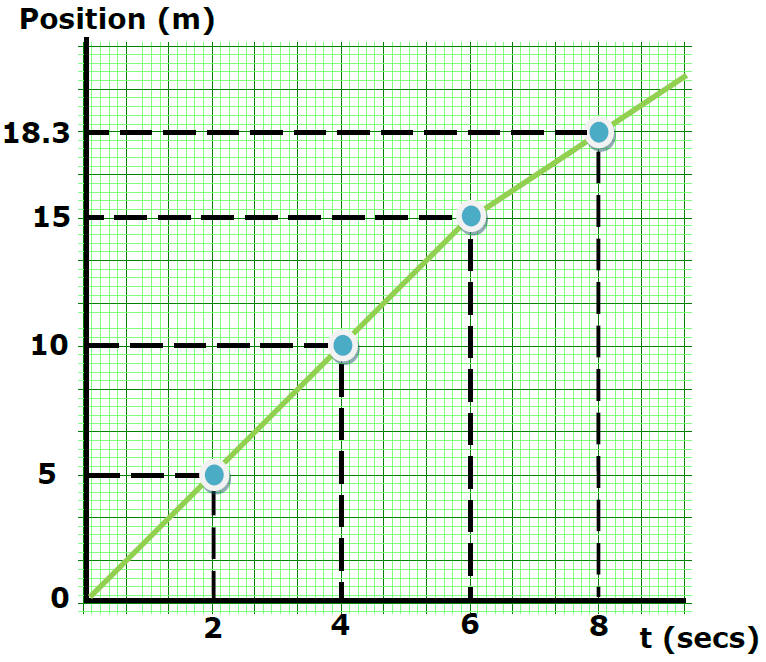![]()
![]()

Motion Plots I
|
Read this passage and answer these questions When physicists want detailed information about an object's movement, they gather data about it every second or millisecond. Sometimes, they gather the displacement (distance and direction from a starting point) at each moment in time, and other times, it is more useful to record the object's velocity. The data collected is then transformed into a visual representation, with the independent variable, time, on the x-axis and either the object's distance and direction or its velocity on the vertical axis. This plot, a snapshot of the object's motion, is a powerful tool that brings abstract concepts to life. But the real magic lies in the slope of a motion plot, which holds even more information, waiting to be deciphered. Here's how it works. You'll probably remember that the slope of any plot is ΔY/ΔX. Therefore, the slope of a displacement vs time plot at any given time would tell you about the object's velocity (Δd/Δt) during the interval you are concerned with. On the other hand, the slope of a velocity vs time plot during a time interval would reveal the object's acceleration. This is because acceleration is ΔV/Δt. |
![]()
Video Instruction
showmethephysics.com
|
Enduring Understanding 1. The slope
of a distance or position vs time plot tells allows us to
calculate the speed of an object. |
2nd way to describe motion
B) Motion Plots
(A. K. A. Motion Diagrams)

Position Vs Time Plot
Movement in a Straight line

| Position (m) |
Time (sec) |
| 0 | |
| 2 | |
| 4 | |
| 6 | |
| 8 |
| Position (m) |
Time (sec) |
| 0 | 0 |
| 5 | 2 |
| 10 | 4 |
| 15 | 6 |
| 18.3 | 8 |

Motion Map

5m in 2 sec/5m in 2 sec/5m in 2 sec/3.3 m in 2 sec

Speed from 0 to 2 seconds?

Speed = Δd/Δt
= 5 m/2 sec
= 2.5 m/s
Speed from 2 to 4 seconds?

Speed = Dd/Dt
= 5.0 m/2.0 sec
= 2.5 m/s
Speed from 4 to 6 seconds?

Speed = Δd/Δt
= 5.0 m/2.0 sec
= 2.5 m/s
Does the object travel faster
or slower from 6 to 8 seconds?

Slower Speed
(smaller change in d
during same time)

![]()
Compare speed from 6 to 8 sec
with speed from 8 to 9 sec

![]()
Same Speed, Same Slope

What kind of motion
produced this plot?


Increasing Speed
Motion Map

• Equations


Speed

Velocity
(speed and direction)

Direction

![]()
![]()
©Tony Mangiacapre.,
All Rights Reserved [Home]
Established 1995
Use any material on this site (w/ attribution)
